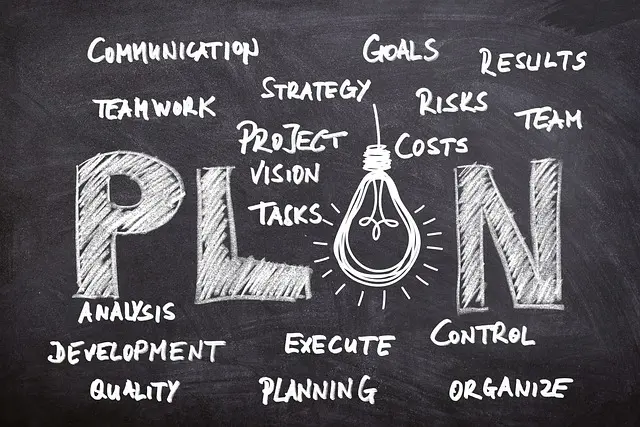
Bridging the Gender Gap in STEM with Educational Opportunities for Women
The gender gap in Science, Technology, Engineering, and Mathematics (STEM) fields has been a persistent issue for decades. Despite significant progress, women are still underrepresented in these critical areas. To effectively bridge this gap, it is crucial to create and promote educational opportunities specifically designed for women. Offering scholarships, fellowships, and grants can play a transformative role in empowering women to pursue STEM careers.
Why Is There a Gender Gap in STEM?
Understanding the reasons behind the gender gap in STEM is the first step toward addressing it. Cultural stereotypes, lack of role models, and gender biases contribute significantly to the disparity. Many girls are discouraged from pursuing STEM careers from an early age, feeding into the cycle of underrepresentation.
Scholarships and Fellowships: A Pathway to Progress
One effective approach to closing this gender gap is to provide women with accessible and substantial educational opportunities through scholarships and fellowships. For example:
- The $2,000 International Humanitarian Aid Fellowships in Jordan, 2024 aim to provide financial support and practical experience for women interested in engineering and technology with a focus on humanitarian efforts.
- The $10,000 Architectural Design Excellence Grant in France, 2024 offers aspiring female architects an opportunity to refine their skills and push the boundaries of innovative design.
Early Exposure and Encouragement
Encouragement must begin early to inspire long-term interest in STEM. Schools and communities need to offer programs that foster curiosity and confidence in subjects like math and science. Initiatives like STEM clubs, coding workshops, and science camps designed specifically for girls can help break down the barriers of entry.
The Role of Role Models and Mentors
Having visible role models and mentors in STEM fields is essential. Female students need to see successful women who have paved the way in these careers. Companies and educational institutions can create mentorship programs where young women are paired with experienced professionals. This guidance can provide the encouragement and support needed to navigate the challenges often faced in male-dominated fields.
Addressing Implicit Bias
Implicit bias in educational settings can deter women from pursuing STEM careers. Teachers and instructors should undergo training to become aware of their unconscious biases and learn strategies to provide an inclusive environment. Educational content must also represent women in textbooks and other teaching materials to normalize their presence in these fields.
The Importance of Financial Support
Financial barriers can significantly impede the educational pursuits of women in STEM. Scholarships and fellowships like the $2,000 International Humanitarian Aid Fellowships in Jordan, 2024 and the $10,000 Architectural Design Excellence Grant in France, 2024 can alleviate these financial burdens. These financial aids do not just cover tuition; they often include stipends for living expenses, research funds, and other academic materials.
Improving College Admission Rates for Women in STEM
To increase the number of women in STEM, colleges should focus on admitting more female students into these programs. Admission policies should consider affirmative action for women in STEM fields where they are underrepresented. Partnerships between high schools and universities can streamline the admission process and provide early admissions opportunities for talented female students.
Industry Collaboration
Collaborations with industry can provide practical experience and networking opportunities for female STEM students. Internships, co-ops, and job shadowing opportunities can give women a firsthand look at STEM careers and demystify the professional landscape. Working closely with industries also ensures that the curriculum remains relevant and aligned with current technological advancements.
Online Learning Opportunities
The accessibility of online learning can bridge geographic and financial barriers. Online courses and programs can provide women, especially those in remote or underserved areas, with access to quality STEM education. Many prestigious universities and organizations are now offering free or subsidized courses in various STEM disciplines, making it easier for women to pursue their interests without financial strain.
Creating a Supportive Environment
A supportive environment is critical for women to thrive in STEM fields. Universities and companies need to implement policies that promote work-life balance, such as flexible working hours and parental leave. Creating a culture of inclusivity where women’s contributions are acknowledged and valued can make a significant difference.
Combating Gender Stereotypes
Combating gender stereotypes requires a multifaceted approach involving educators, parents, and the media. Media representation plays a crucial role in shaping perceptions. Showcasing women in STEM roles across movies, TV shows, and magazines can help normalize their presence in these fields.
Moreover, educating parents about the importance of supporting their daughters in STEM pursuits can positively influence young women’s career choices.
Research and Development Opportunities
Encouraging women to partake in research and development is another critical step. Research grants, like the $10,000 Architectural Design Excellence Grant in France, 2024, specifically for women can provide them with the resources necessary to contribute significantly to their fields. Such grants often lead to breakthroughs that can inspire the next generation of female scientists and engineers.
Policy Interventions
Governments can play a pivotal role by enacting policies that encourage female participation in STEM. Grants, tax incentives for companies hiring women in STEM roles, and funding for women-centric STEM programs are essential policy measures.
Policies that address gender pay gaps and provide transparency in hiring practices can also help in retaining women in STEM careers.
Continuing Professional Development
Lifelong learning and professional development are essential in STEM fields due to rapid technological advancements. Offering continuous learning opportunities and professional development courses can help women stay up-to-date with the latest trends and technologies.
Grants and fellowships should also support women’s professional development and encourage them to take leadership roles within their respective fields.
Measuring Success and Making Adjustments
It’s important to measure the impact of these initiatives continuously. Keeping track of enrollment numbers, retention rates, and career advancements will help in understanding what works and what doesn’t. Feedback from female students and professionals can provide invaluable insights for refining these programs.
Conclusion
Bridging the gender gap in STEM is not just about fairness; it’s about enriching the field with diverse perspectives that drive innovation and progress. Creating and promoting educational opportunities, like the $2,000 International Humanitarian Aid Fellowships in Jordan, 2024 and the $10,000 Architectural Design Excellence Grant in France, 2024, can play a significant role in empowering women to pursue and excel in STEM careers.
Educational institutions, governments, industries, and communities must work collaboratively to tackle the cultural, financial, and institutional barriers that women face. By doing so, we can create a more inclusive, innovative, and equitable future for everyone.












